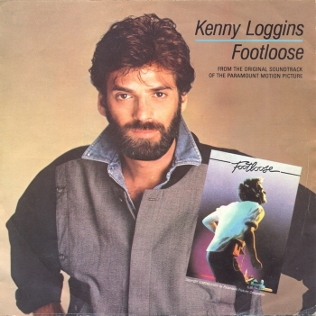 1989 was a pivotal year for heavy metal and hard rock, and among the most memorable anthems of the era was Skid Row’s haunting narrative ballad “18 and Life.” Featured on their self-titled debut album, the song quickly became a defining track for the band and a staple of late-’80s rock radio. Unlike the high-octane party tracks that characterized much of glam metal, “18 and Life” combined hard rock’s energy with a deeply tragic story, capturing the struggles of youth, impulsive decisions, and the heavy consequences of one life-altering moment. Its blend of compelling storytelling, searing guitar riffs, and powerful vocal delivery established Skid Row as a band capable of both raw power and emotional resonance, setting them apart in a crowded musical landscape.
1989 was a pivotal year for heavy metal and hard rock, and among the most memorable anthems of the era was Skid Row’s haunting narrative ballad “18 and Life.” Featured on their self-titled debut album, the song quickly became a defining track for the band and a staple of late-’80s rock radio. Unlike the high-octane party tracks that characterized much of glam metal, “18 and Life” combined hard rock’s energy with a deeply tragic story, capturing the struggles of youth, impulsive decisions, and the heavy consequences of one life-altering moment. Its blend of compelling storytelling, searing guitar riffs, and powerful vocal delivery established Skid Row as a band capable of both raw power and emotional resonance, setting them apart in a crowded musical landscape.
“18 and Life” resonates not just for its catchy hooks or polished production, but for the emotional gravity of its narrative. The lyrics tell the story of Ricky, a young man whose life takes a devastating turn after a single violent act. Themes of recklessness, consequences, and the harsh realities of growing up in a challenging environment are woven into the song, giving it a moral and human dimension often absent from glam metal hits of the era. Sebastian Bach’s soaring vocals provide an urgent and heartbreaking lens into Ricky’s story, while the band’s instrumentation alternates between driving intensity and melodic introspection, reinforcing the song’s emotional peaks and valleys.
From its opening guitar riff to the climactic choruses, “18 and Life” draws the listener into a narrative experience. It is a song that balances accessibility with depth, appealing to fans of hard rock and heavy metal while also capturing the attention of those drawn to storytelling and lyrical substance. The track’s enduring appeal lies in this duality: it is both an arena-ready anthem and a cautionary tale, its energy matched by its thematic weight.
Origins and Context
“18 and Life” was co-written by Skid Row members Rachel Bolan and Dave “The Snake” Sabo, reflecting the band’s ability to craft vivid, character-driven stories. The song draws inspiration from the experiences of youth navigating challenging environments, where impulsive actions can have irreversible consequences. This thematic focus distinguished Skid Row from many of their peers in the glam metal scene, who often emphasized hedonism, partying, and romantic escapades over storytelling.
The late 1980s was a time when heavy metal was diversifying. While bands like Mötley Crüe and Poison dominated charts with high-energy party anthems, Skid Row carved out a niche by addressing darker, more relatable human experiences. “18 and Life” exemplifies this approach, blending heavy riffs and melodic hooks with lyrics that explore personal tragedy, moral lessons, and the consequences of choices made under pressure. The song’s authenticity resonated with listeners, particularly young fans who could relate to the struggles of adolescence, social pressure, and the search for identity.
Musical Structure and Composition
“18 and Life” opens with a sharp, arpeggiated guitar riff, immediately establishing a sense of drama and urgency. Dave Sabo’s guitar work throughout the track balances melody and aggression, delivering riffs that are both memorable and emotionally charged. The rhythm section, led by Rachel Bolan’s driving bass lines and Rob Affuso’s precise drumming, anchors the song with a steady pulse that underlines the narrative tension.
The song’s structure is deliberately crafted to support its storytelling. Verses are delivered with a sense of narrative urgency, allowing Sebastian Bach’s vocals to convey the weight of Ricky’s story. The choruses explode with melodic power, offering a cathartic release that mirrors the emotional climax of the narrative. A mid-song guitar solo heightens the tension, blending technical proficiency with expressive phrasing, effectively translating the story’s drama into musical language.
Skid Row’s arrangement demonstrates the band’s ability to balance accessibility with hard rock authenticity. The song’s tempo and melodic hooks make it radio-friendly, while the layered instrumentation and dramatic vocal delivery ensure that it remains compelling to fans of heavier, more technical rock.
Lyrics and Storytelling
At the heart of “18 and Life” is its story, which unfolds with cinematic clarity. The lyrics recount the life of Ricky, a young man whose reckless choices ultimately lead him to a tragic fate. Lines like:
“Ricky was a young boy, he had a heart of stone / Lived 9 to 5 and worked his fingers to the bone”
…immediately situate the listener in Ricky’s world, painting a portrait of a character shaped by his environment and circumstances. The song emphasizes the inevitability of consequences, portraying Ricky’s downfall as both shocking and tragically understandable.
Sebastian Bach’s vocal performance enhances the storytelling, delivering each line with emotional intensity that conveys Ricky’s desperation, confusion, and regret. The chorus, with its anthem-like declaration:
“18 and life, you got it / 18 and life, you know”
…serves as both a narrative pivot and a moral refrain, reinforcing the song’s cautionary message. The repetition of the phrase underscores the inevitability of Ricky’s fate, transforming the song from a mere story into a memorable, resonant warning.
The lyrics’ combination of narrative detail and universal themes—youth, rebellion, consequence—allows the song to transcend its immediate context. While the events are specific, the emotions and moral dilemmas are relatable across generations, contributing to the track’s enduring appeal.
Vocal Performance and Emotional Resonance
Sebastian Bach’s contribution to “18 and Life” cannot be overstated. His vocal range, characterized by high-pitched intensity and dramatic inflection, captures the emotional stakes of Ricky’s story. Bach’s ability to transition from intimate, reflective verses to powerful, arena-ready choruses ensures that the song resonates both as a narrative and as a musical experience.
The interplay between vocals and instrumentation is crucial. Guitar riffs echo Bach’s emotional phrasing, drums punctuate moments of tension, and bass lines add depth and grounding. This synergy creates a fully immersive listening experience, allowing the listener to feel the urgency, fear, and heartbreak of the story firsthand. The result is a song that is as emotionally compelling as it is musically memorable.
Cultural Impact
“18 and Life” quickly became one of Skid Row’s signature tracks, cementing their reputation in the late-1980s hard rock and heavy metal scene. It achieved commercial success, receiving extensive radio play and becoming a favorite among fans for its combination of melodic hooks and narrative depth.
The song’s impact extends beyond its chart performance. By telling a story with emotional and moral weight, Skid Row demonstrated that hard rock and metal could explore complex themes without sacrificing accessibility or energy. This approach influenced other bands in the genre, encouraging a wave of narrative-driven songs that balanced musical intensity with storytelling.
Moreover, “18 and Life” resonated with audiences because it reflected real-life struggles and consequences, providing listeners with both entertainment and insight. It became a touchstone for young fans navigating adolescence, societal pressure, and the challenges of personal decision-making, helping to solidify Skid Row’s connection to their audience.
Musical and Stylistic Innovation
While rooted in the glam metal and hard rock traditions of the late 1980s, “18 and Life” stands out for its narrative sophistication and emotional nuance. The song’s combination of melodic hooks, hard-hitting riffs, and story-driven lyrics set it apart from the party anthems and love songs that dominated the charts. Skid Row demonstrated that metal could be both aggressive and empathetic, delivering a song that appealed to both the head and the heart.
The production, characterized by polished but powerful instrumentation, enhances the song’s dramatic arc. Guitar solos are emotive rather than purely technical, the rhythm section maintains a sense of urgency without overwhelming the vocals, and Bach’s soaring delivery ensures that the narrative remains central. This careful balance of elements contributed to the song’s enduring relevance and its recognition as a classic of the genre.
Legacy and Enduring Appeal
More than three decades after its release, “18 and Life” remains one of Skid Row’s most iconic tracks. Its combination of storytelling, musical craftsmanship, and emotional resonance ensures its continued popularity among fans of hard rock and metal. The song has become a staple in classic rock playlists, a touchstone for live performances, and an influential reference point for artists exploring narrative-driven rock.
The song’s enduring appeal is rooted in its universality. While the story of Ricky is specific, the themes of youth, consequence, and moral reflection are timeless. “18 and Life” continues to resonate because it captures a fundamental truth about human experience: that impulsive choices can have lasting effects, and that tragedy often lies just beyond the horizon of recklessness.
Why “18 and Life” Matters
“18 and Life” matters because it elevates hard rock storytelling. It demonstrates that a heavy, aggressive musical style can coexist with narrative depth and emotional nuance. The song’s success proved that audiences were receptive to lyrics that explored tragedy, consequence, and personal struggle, paving the way for future bands to experiment with similar themes.
The track also showcases the talents of Skid Row as a band: Sebastian Bach’s vocal prowess, Dave Sabo’s guitar work, Rachel Bolan’s commanding bass, and Rob Affuso’s precise drumming combine to create a cohesive, emotionally resonant musical experience. Each element contributes to a song that is both memorable and meaningful, balancing narrative and musicality with expert precision.
Finally, “18 and Life” continues to resonate because it addresses universal themes that remain relevant across generations. Its narrative warns of the consequences of impulsive choices, its music conveys urgency and emotion, and its impact on popular culture solidifies its status as a classic of late-1980s hard rock.
Conclusion
Skid Row’s 1989 anthem “18 and Life” is more than just a hard rock hit—it is a masterclass in narrative songwriting, emotional resonance, and musical craftsmanship. From its opening guitar riff to its soaring chorus, the song immerses listeners in the story of Ricky, a young man whose life spirals tragically out of control. The combination of melodic hooks, hard-hitting instrumentation, and Sebastian Bach’s powerful vocals ensures that the song captivates both the heart and the ear.
Decades later, “18 and Life” remains a defining track of late-1980s rock, an enduring example of how heavy music can tell compelling stories while connecting with audiences on an emotional level. Its legacy lies in its ability to entertain, caution, and resonate, proving that Skid Row was not only a band of technical skill but also of narrative vision. Every chord, every note, and every lyric reinforces the song’s timeless message: youth is fleeting, choices have consequences, and the weight of a single moment can define a lifetime.
“18 and Life” is not just a rock anthem—it is a cautionary tale, a musical experience, and a testament to the enduring power of storytelling in hard rock. It stands as a symbol of Skid Row’s artistry, their ability to blend melody with narrative, and their lasting impact on the genre of heavy metal and hard rock.


